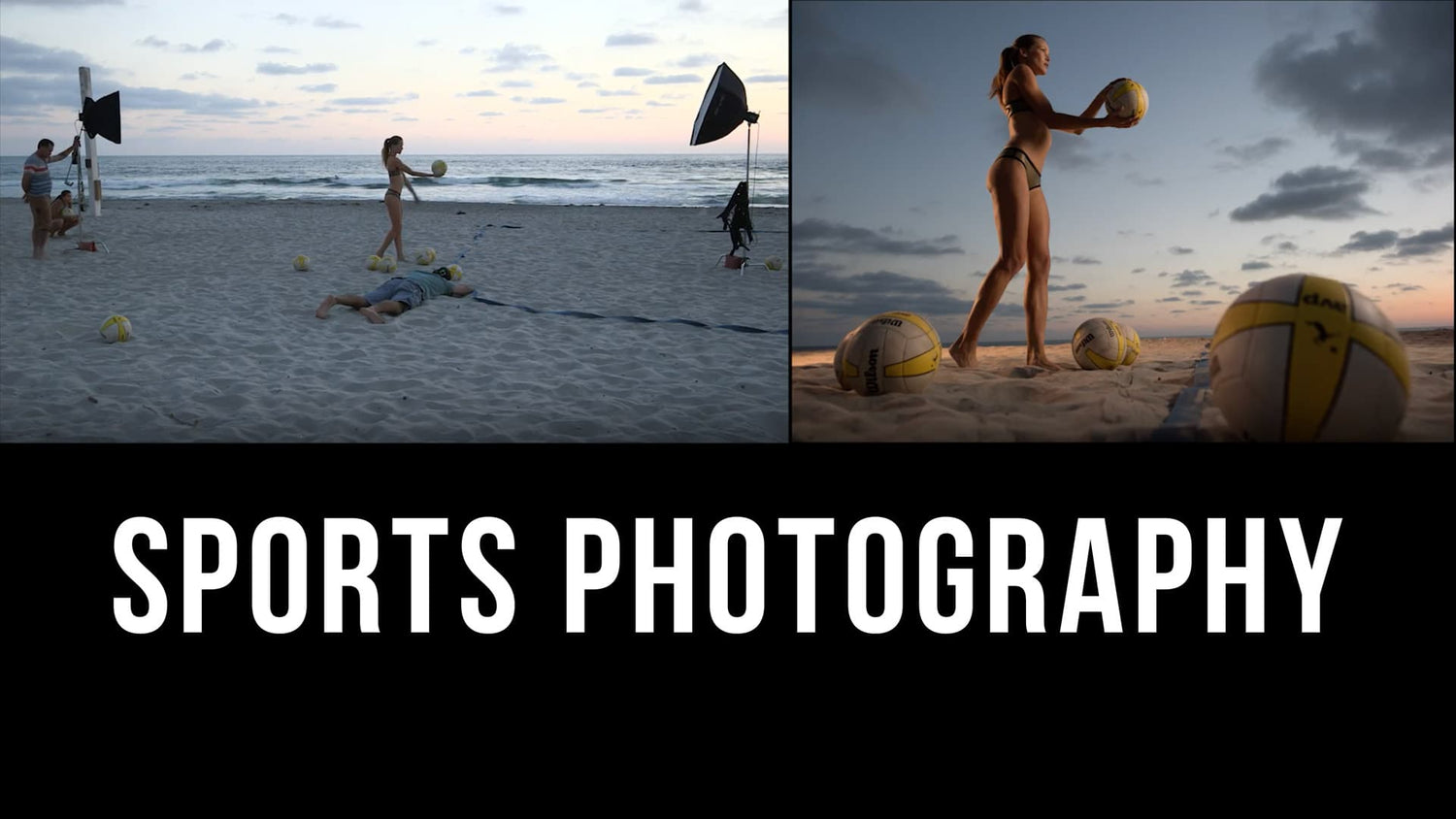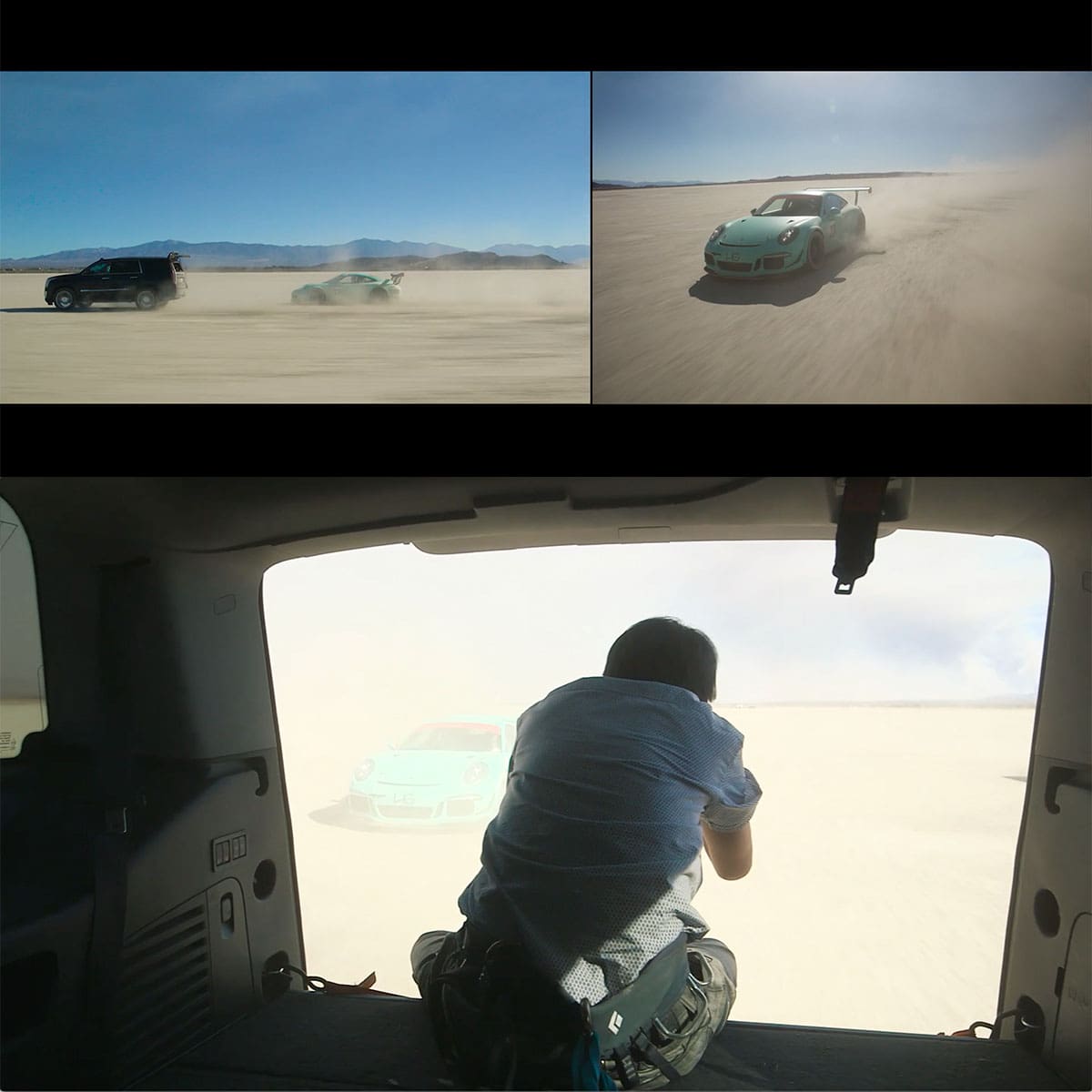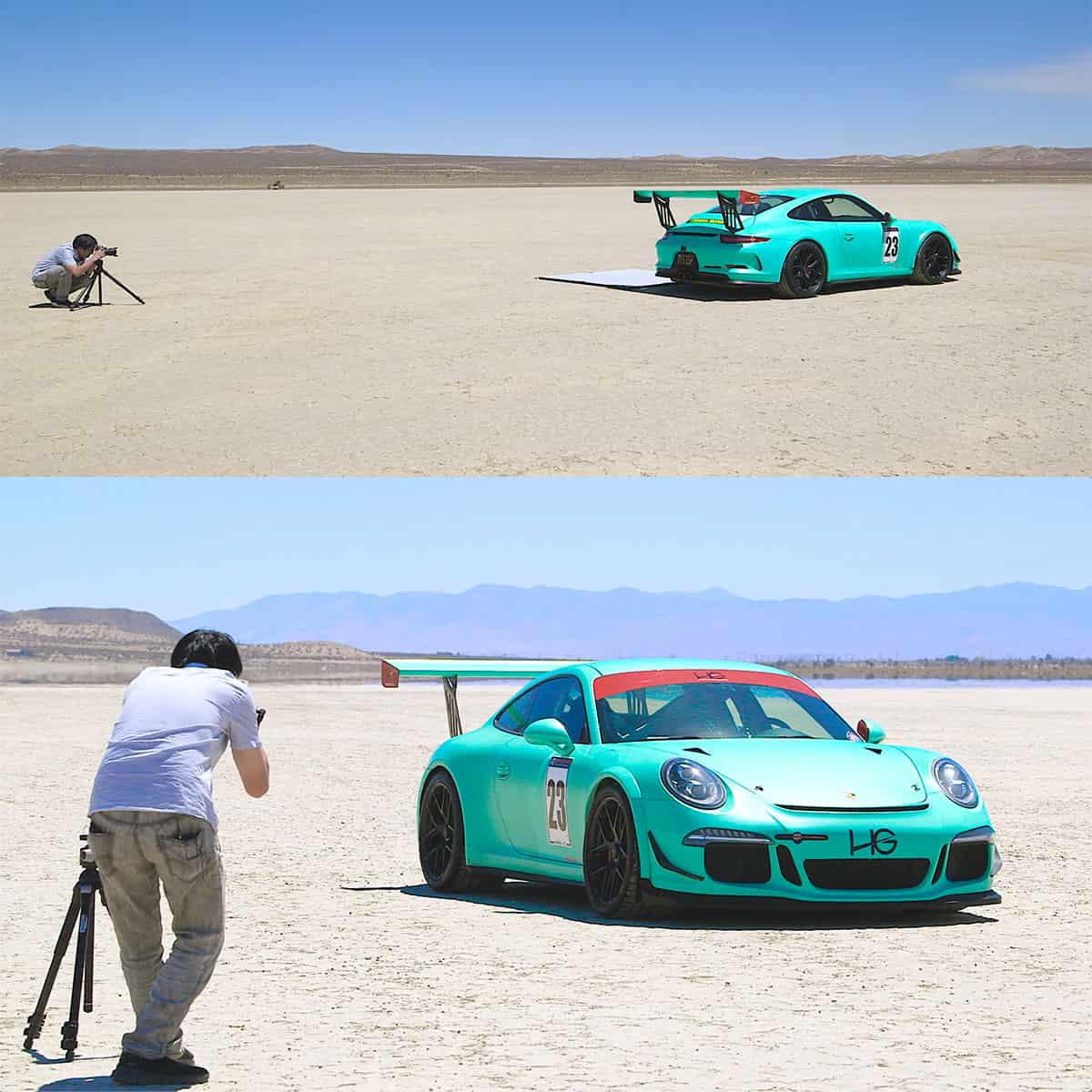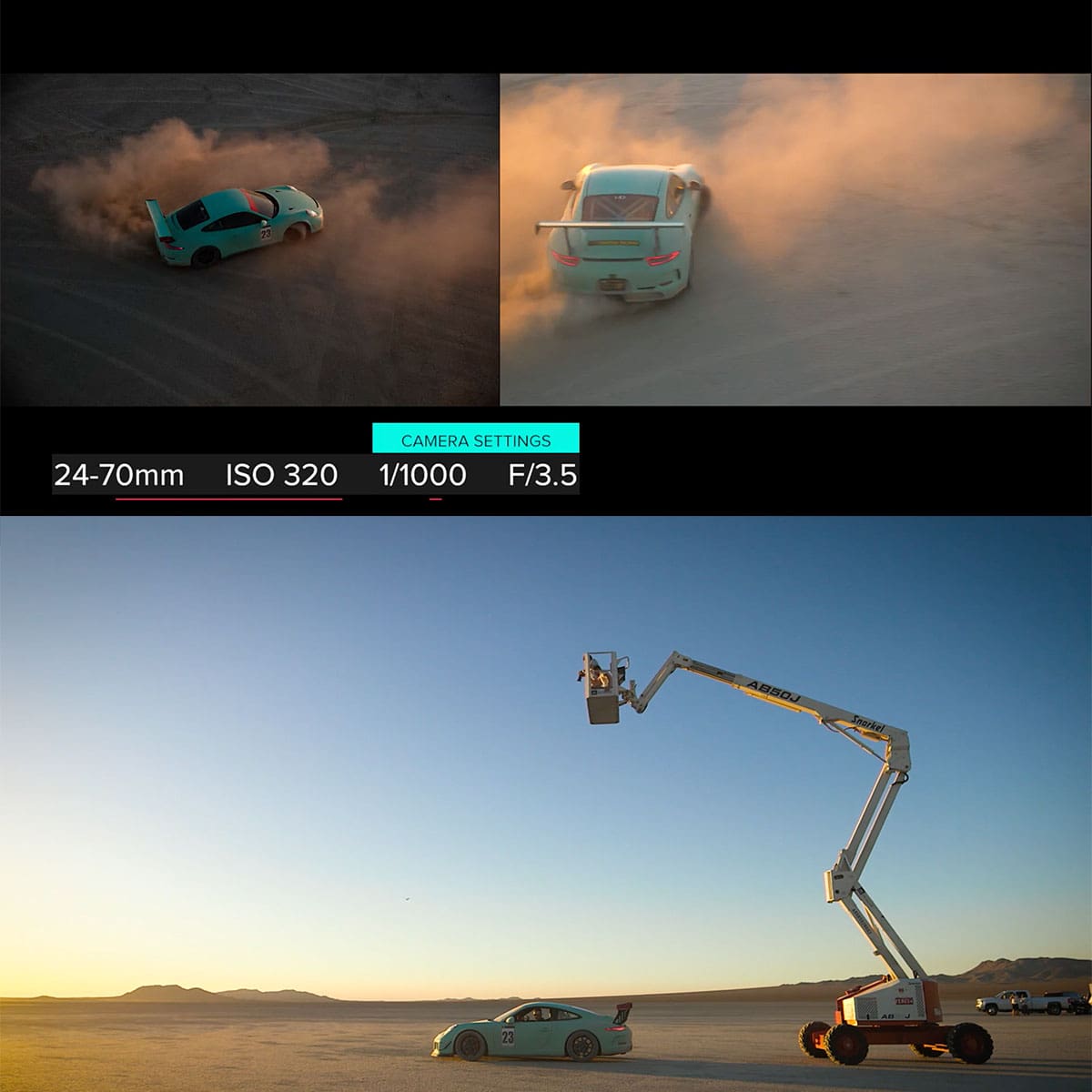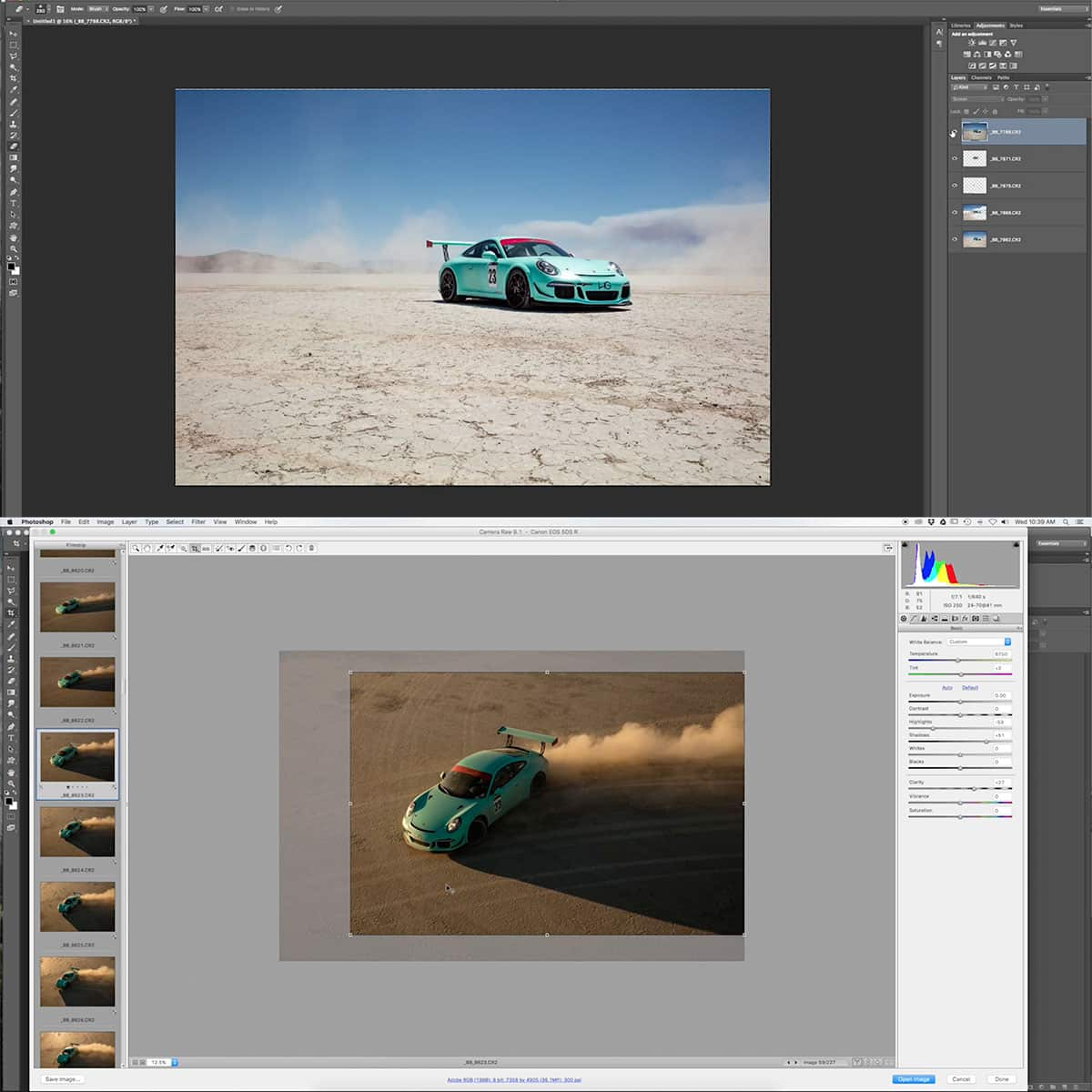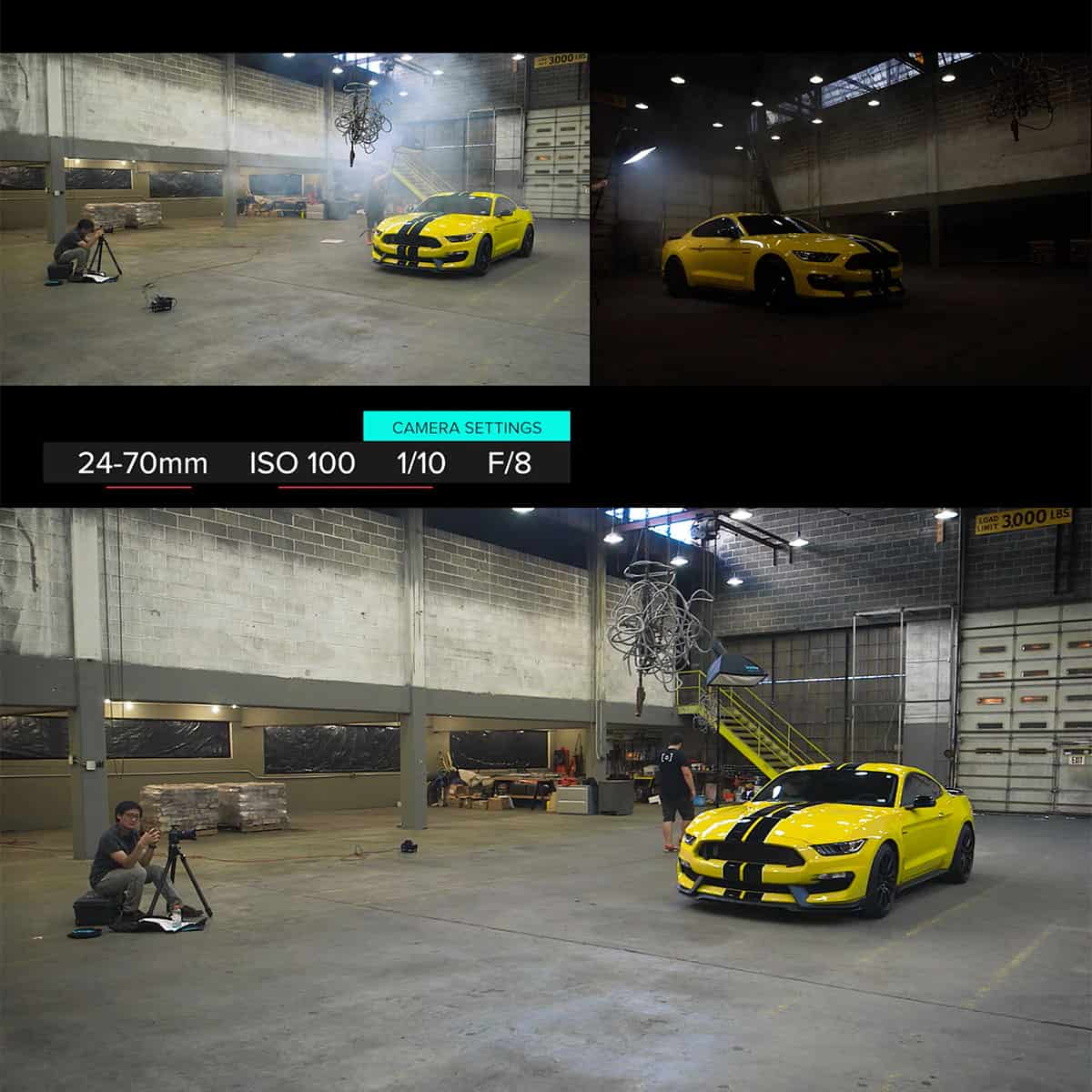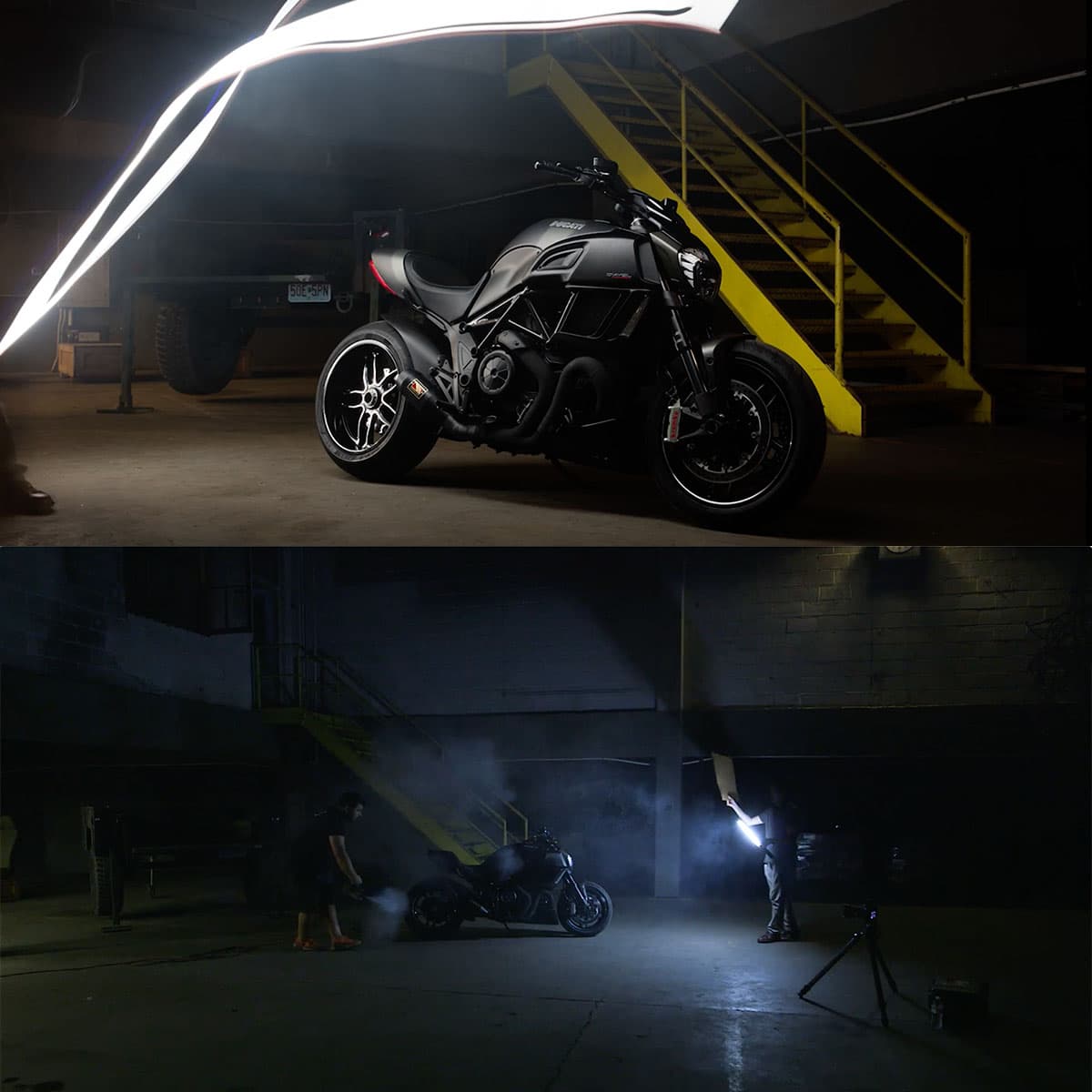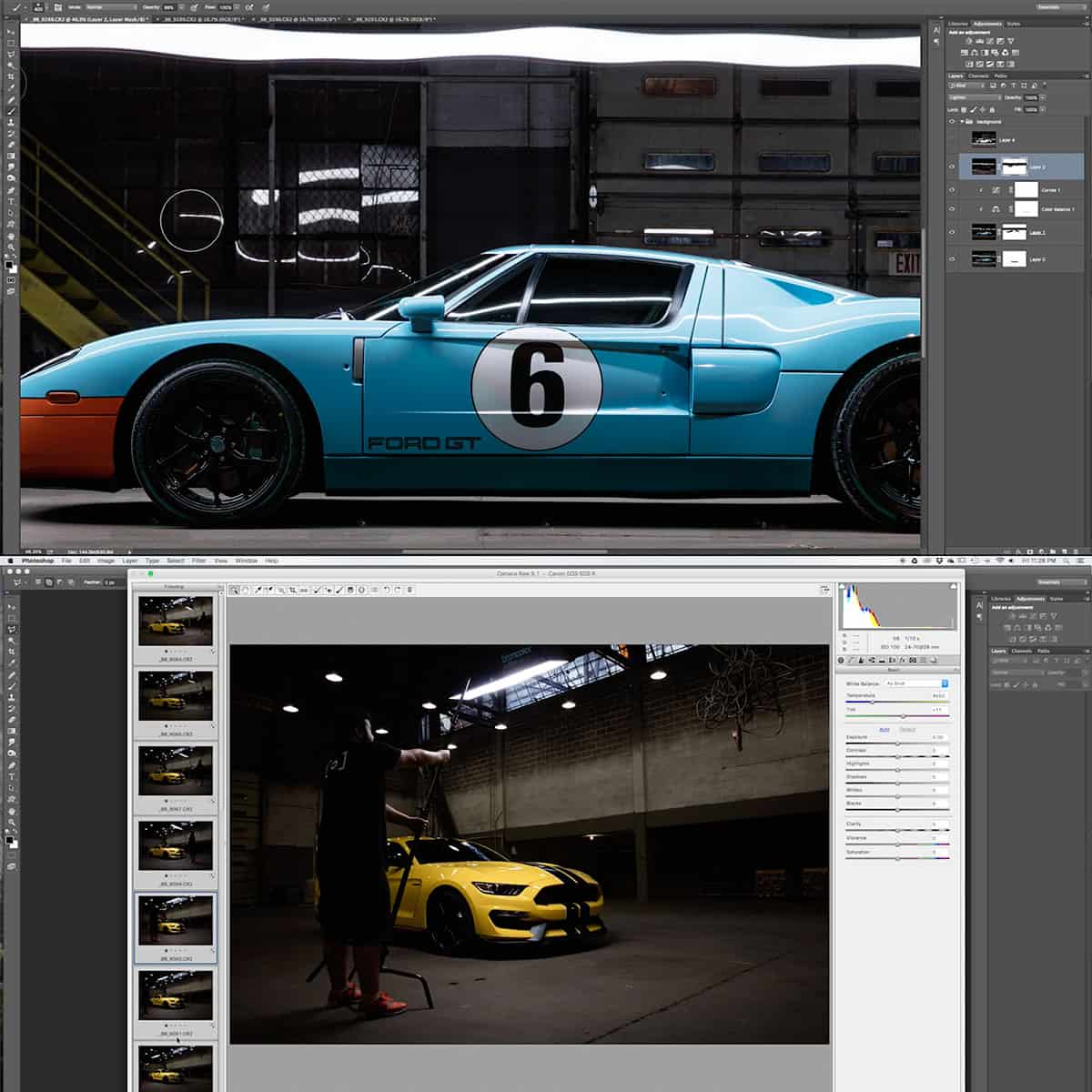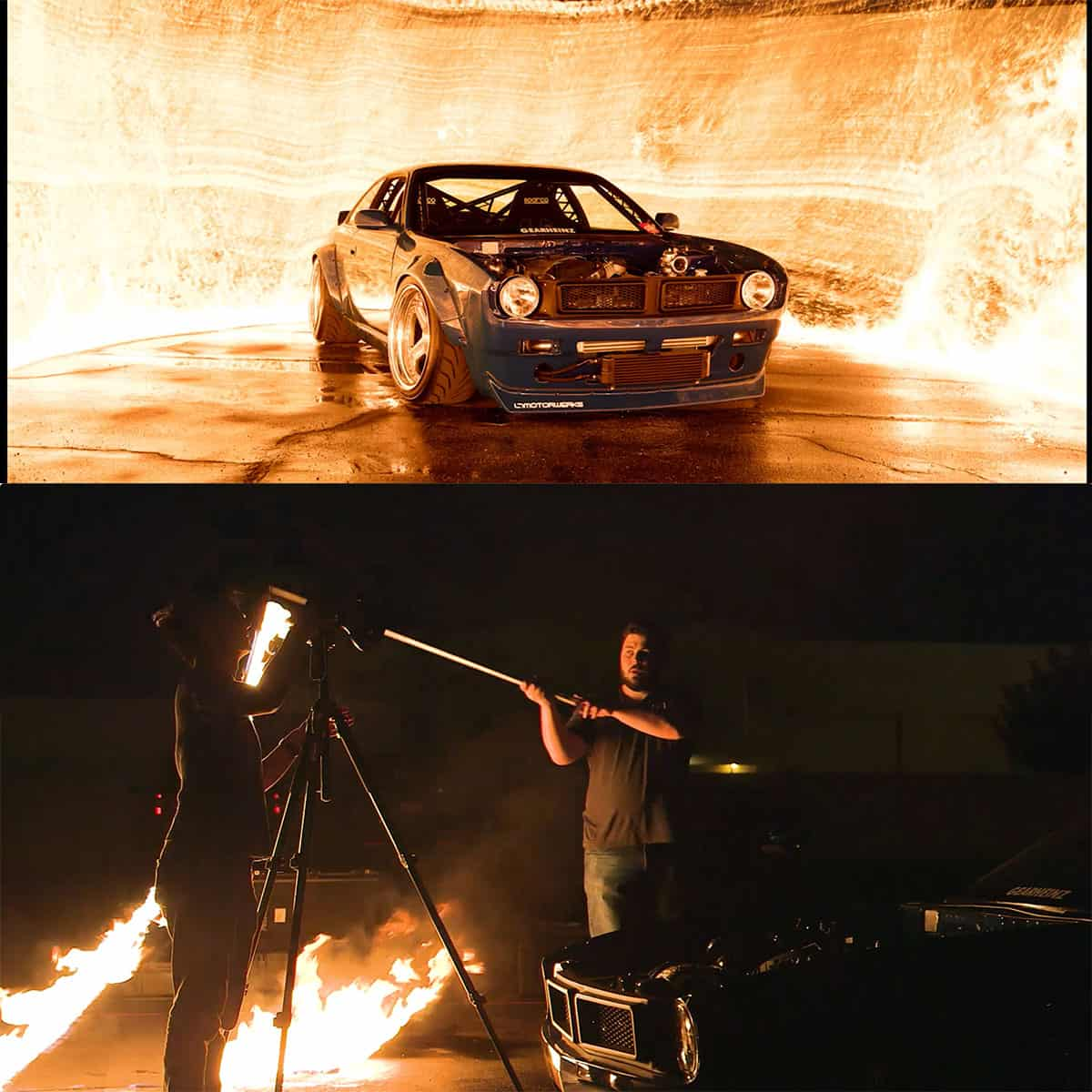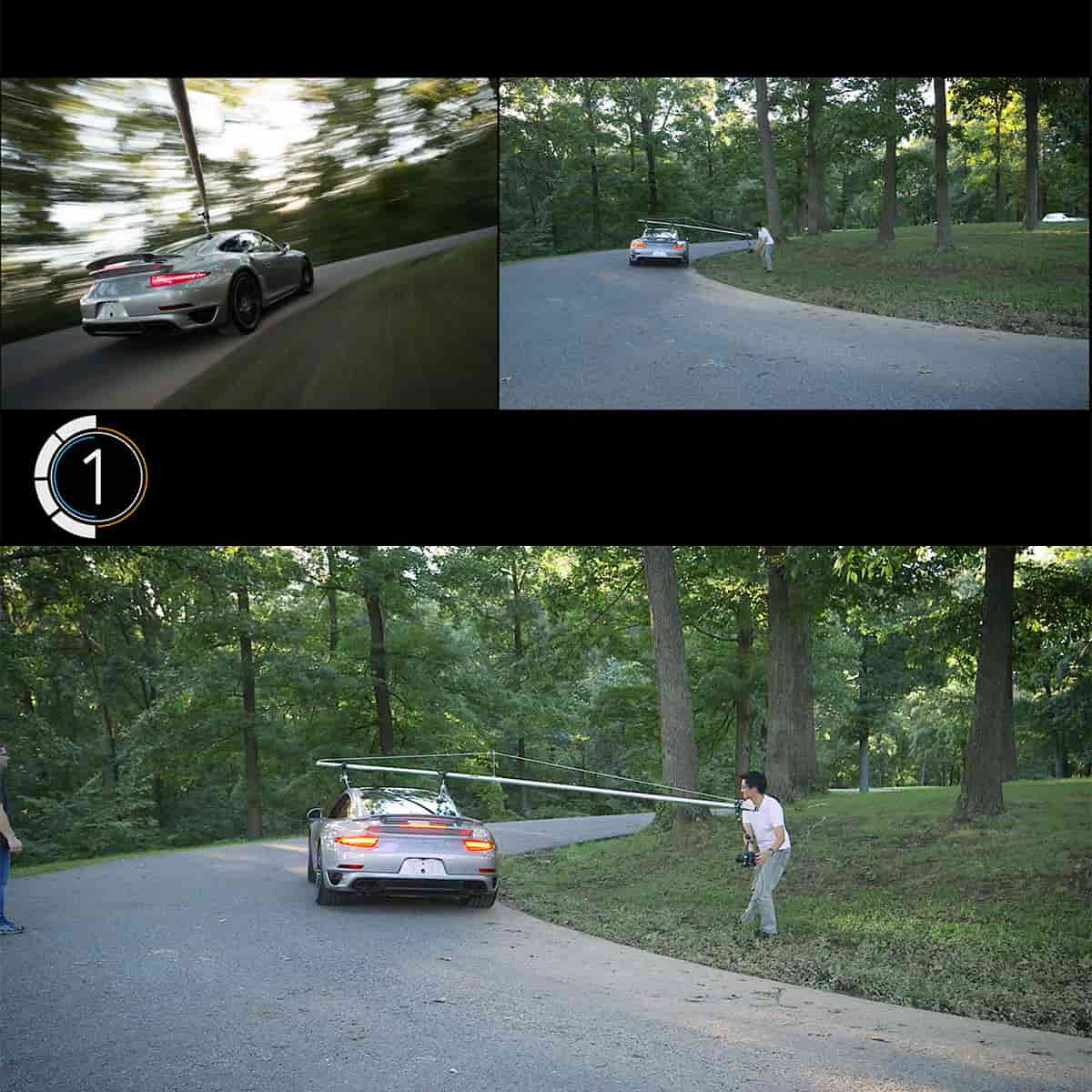Meet the Nike & NFL Photographer doing groundbreaking work.
Sports photography is a fascinating genre that requires a combination of technical expertise and a deep understanding of the athletes and the game. By watching the PRO EDU Tutorial on Sports Photography with Tim Tadder, photographers can gain valuable insights into the world of professional sports photography and learn how to create iconic images that capture the essence of athleticism.
In this tutorial, Tim Tadder shares his wealth of experience working with top athletes from around the world. He explains his philosophy and creative approach to sports photography, as well as the importance of understanding the individual athlete and their sport. By exploring Tim's workflow and techniques, photographers can learn how to enhance their own sports photography and develop a signature style that sets them apart from the competition.
Key Takeaways
- Gain insights from the acclaimed sports photographer, Tim Tadder while learning his philosophical approach to his work
- Learn the importance of creativity and understanding athletes in sports photography
- Enhance your skillset and develop a signature sports photography style
Who Is Tim Tadder?
Tim Tadder is a highly accomplished and renowned photographer, specializing in sports photography. Born into a family with a background in commercial photography, Tim has carved his own niche in the industry by working with top-tier athletes and capturing their unique moments in action. His stunning and epic captures have been commissioned by well-known brands like Nike, Adidas, and Reebok.
Throughout his career, Tim has not only refined his skills but also honed his ability to create extraordinary content using accessible lighting and camera equipment. He is known for his strong convictions pertaining to sports photography, which have propelled him to the top of his industry.
In the PRO EDU tutorial, Tim generously shares his wealth of knowledge and experience, providing photographers with an insight into his exceptional work, techniques, and the thought process behind his captivating sports imagery.
One of the unique aspects of Tim Tadder's photographic style is his ability to utilize everyday equipment in a resourceful manner, creating stunning visuals in a wide range of environments. With this approach, he emphasizes the importance of innovation and creativity over relying solely on high-end gear. As budding photographers watch the tutorial, they can glean valuable lessons on how to maximize their resources and develop their style.
Tim's vast experience in the field of sports photography, combined with his artistic talent and technical know-how, make him an esteemed figure in the community. By following his footsteps and embracing his teachings, photographers can achieve their goals and elevate their own sports photography skills.
The Philosophy of Tim Tadder
In the sports photography PRO EDU tutorial, Tim Tadder shares his approach and philosophy towards photographing athletes. As we dive into his thoughts and ideas, we can better understand what sets him apart as one of the top sports photographers in the industry.
Tim Tadder's outlook revolves around capturing the essence of an athlete - their strength, determination, and skill. He believes that the best sports photography closely resembles a form of art, and he strives to convey each athlete's unique story through their powerful movement. Authenticity plays a key role in Tadder's work, as he aims to present the athletes at their most intense and dedicated moments.
To achieve such stunning visuals, lighting and composition are of utmost importance in Tadder's philosophy. He has a meticulous eye for detail and uses directional lighting to bring out the best of an athlete's features and expressions. Tadder often experiments with different techniques to add depth to his images, which can be observed in the way he manipulates shadows and highlights.
Furthermore, Tadder emphasizes the importance of communication and collaboration with athletes when photographing them. He believes that a clear understanding of their goals and emotions helps to create a dynamic representation of their efforts during a performance. By working closely with the athletes, Tim Tadder can accentuate their raw passion and dedication, making his images more striking and memorable.
Major takeaways from Tim Tadder's philosophy for sports photographers include:
- Embrace authenticity and emotion in your photos
- Utilize dynamic lighting and strong composition to create impactful images
- Collaborate with athletes for a clear understanding of their message
- Highlight an athlete's strength, determination, and skill
By exploring Tim Tadder's approach to sports photography through the PRO EDU tutorial, we can learn valuable insights and techniques to improve our own skills as photographers. His philosophy not only offers a fresh perspectives on capturing athletes but also serves as an inspiration to push the boundaries of our creativity.
Key Takeaways from the Tutorial
In this section, we will highlight some valuable lessons and tips that photographers will learn from watching the Sports Photography with Tim Tadder tutorial. Our goal is to provide essential information without delving too deeply into details, focusing mainly on key takeaways that can improve your sports photography skills.
One crucial aspect that comes across in this tutorial is the importance of understanding the sports you are covering. This helps us anticipate moments and capture compelling, authentic images. Being familiar with how athletes move, the rules of the game, and the emotions that drive the sport significantly enhance our ability to create powerful photographs.
Another essential piece of advice from the tutorial is, gear selection. Aspiring sports photographers should invest in a fast camera with a high frame rate, and high-quality telephoto lenses to capture sharp images from a distance. If we equip ourselves with the right gear for the job, we significantly increase our chances of capturing those amazing, once-in-a-lifetime shots.
The tutorial also emphasizes the importance of camera settings. Learning how to use manual settings, such as shutter speed, aperture, and ISO, effectively, empowers us to take creative control over our images. For example, fast shutter speeds are essential for freezing motion, while wider apertures help separate the subject from the background and make them stand out.
Beyond capturing the action, the tutorial points out the necessity to tell stories through our sports photographs. Including emotions, reactions, and behind-the-scenes moments in our images can give context and insight into what is happening on and off the field.
Lastly, every sports photographer should continuously learn and grow, and one way to do that is by analyzing the work of professionals, like Tim Tadder. Observing the techniques and approaches used by successful sports photographers not only serves as inspiration but also helps us identify ways to improve our own work.
By focusing on these key takeaways from the tutorial, we will be well on our way to honing our sports photography skills and achieving professional-level results.
The Importance of Creativity in Sports Photography
In this PRO EDU Sports photography tutorial by Tim Tadder, we will explore the significance of creativity in sports photography. Sports photography requires a combination of technical expertise and artistic vision to truly capture the essence of a sporting event. Through this tutorial, we will learn how to create visually engaging images that tell a compelling story.
One key aspect we learn in the tutorial is the importance of anticipation and prediction. Sports events are fast-paced and unpredictable, which means we need to hone our skills in anticipating the athlete's movements and predicting the outcome of their actions. This foresight will allow us to position ourselves strategically, set the appropriate camera settings, and capture those split-second moments that make unforgettable sports photographs.
Moreover, the tutorial emphasizes the value of experimentation in creating dynamic images. As sports photographers, we should constantly push ourselves to try new angles, compositions, and techniques to elevate our work. This may include utilizing varying shutter speeds, focal lengths, or even incorporating elements such as shadows and reflections.
Another crucial element we gather from the tutorial is the necessity to build a strong narrative through our images. Sports photography is not just about capturing a single frame but rather telling a story that encapsulates the emotion, intensity, and spirit of the athletes and their game. By focusing not only on the peak action but also on the reactions and interactions of the players, we can create a more captivating and immersive visual experience for our viewers.
Tim Tadder's PRO EDU Sports photography tutorial offers a comprehensive and insightful approach to mastering the art of sports photography. As we learn the significance of creativity in this field, we will be equipped with the tools and techniques to produce powerful images that evoke the passion and energy of the sporting world.
Understanding the Sports Athlete
In this sports photography PRO EDU tutorial, we will dive into the essence of capturing the power and grace of athletes in sports photography. Through this tutorial, we learn that having a deep understanding of the athletes we photograph is essential in creating powerful images that tell compelling stories.
To master sports photography, it is vital to know the individual athlete's strengths, weaknesses, and unique characteristics. This allows us to anticipate their movements, expressions, and the decisive moments in a game or event. By comprehending the very nature of the sports and athletes we cover, we can more effectively capture their essence and showcase their prowess.
The tutorial emphasizes the importance of connecting with athletes on a personal level, treating them with respect, and learning about their backgrounds. Knowing their journey, their drive, and their ambitions will enable us to better tell their story and evoke emotions in our audience.
Key aspects of understanding the sports athlete:
- Study their technique – Each athlete has their unique style and technique in executing their sports. By carefully observing and learning their moves, we can better anticipate and capture the critical moments.
- Analyze their strengths and weaknesses – Athletes have different strengths and weaknesses. As photographers, being aware of these attributes will allow us to showcase their talents and capture their struggles effectively.
- Discover their personal story – An athlete's background, experiences, and goals affect their performance. By understanding their story, we can create images that reflect their character and their journey.
- Build rapport – Establishing a trustful and respectful relationship with the athlete allows for better communication and achieving authentic and emotional shots.
With these insights, we can now shift our focus towards the actual process of photographing athletes. We will learn the art of composition, the importance of proper lighting, and mastering our gear to achieve stunning sports photographs that not only showcase the strength and elegance of the athletes but also provide a glimpse into the raw emotions they experience during their performances.
Key Takeaways
Firstly, we emphasize the importance of knowing the sport. Familiarizing ourselves with the game and its intricacies, like understanding the rules and players' positions, can be crucial to anticipate and capture the decisive moments.
Next, we discuss essential gear for sports photography. It's advisable to invest in a fast camera with a high burst rate and telephoto lenses with varying focal lengths. The tutorial goes in-depth with the settings for optimal exposure and sharpness.
Here's a summary of settings to consider:
| Setting | Recommendation | Reason |
|---|---|---|
| Aperture | f/2.8-f/4 | To maximize light and separate the subject |
| Shutter Speed | 1/1000-1/2000 sec | To freeze motion |
| ISO | As low as possible | To minimize noise |
| Focal Length | 70-200mm or higher | To get close to the action |
We also highlight effective techniques to improve our sports photography, such as:
- Pre-focusing on an area where the action is expected
- Using burst mode to increase the chances of capturing a perfect moment
- Experimenting with different angles to create unique perspectives
One part of the tutorial explores sports photography compositions. We focus on the rule of thirds and leading lines as our guiding principles, while also encouraging experimentation to help develop our personal style.
Another important aspect covered in the tutorial is post-processing using software like Adobe Lightroom and Photoshop. We discuss techniques like cropping, sharpening, color correction, and noise reduction, which can significantly enhance sports images.
In conclusion, this sports photography tutorial equips us with the knowledge and techniques needed to excel in capturing unforgettable moments in sports. By applying these insights to our photography endeavors, we can ambitiously pursue the art of sports photography with confidence.
Frequently Asked Questions
What techniques will be covered in this tutorial?
In this sports photography PRO EDU tutorial, we will cover various techniques essential for capturing stunning sports action shots. Some of these techniques include panning, tracking, and using a fast shutter speed to freeze motion. It is crucial for photographers to learn these techniques to deliver high-quality sports images that capture the intensity and excitement of the game.
How can photographers improve their sports action shots?
Photographers can improve their sports action shots by working on their timing, composition, and understanding of the sport. Knowing when and where crucial moments are likely to happen can help photographers position themselves for an optimal shot. Additionally, practicing different camera settings, such as the shutter priority mode, will enable photographers to capture crisp and clear action images.
How does this tutorial address lighting in sports photography?
Lighting plays a critical role in sports photography. This tutorial will discuss how to work with available light, both natural and artificial, to create visually appealing sports photographs. We will cover different ways to balance and supplement existing light sources to ensure the subject is well illuminated and the image has the desired impact.
Which camera settings are recommended for sports photography?
The tutorial will guide photographers on selecting the appropriate camera settings for different sports and conditions. For instance, a fast shutter speed is crucial for freezing action, while a higher ISO value may be necessary in low light conditions. The shutter priority mode is a recommended setting for sports photography, as it allows you to focus on adjusting the shutter speed, with the rest of the settings adjusting automatically.
Will this course teach post-processing for sports images?
Yes, the sports photography PRO EDU tutorial will cover post-processing techniques specific to sports images. Enhancing colors, adjusting contrast, cropping, and sharpening are some essential editing skills that photographers will learn to make their sports photographs stand out in publications and online platforms.
How can photographers develop their own style in sports photography?
Developing a unique style in sports photography requires practice, experimentation, and learning from the works of experienced sports photographers. The PRO EDU tutorial will provide photographers with insights and examples from professionals, allowing them to understand different shooting styles and techniques. By incorporating these learnings into their own work and experimenting with various methods, photographers can eventually develop their own distinctive style.


